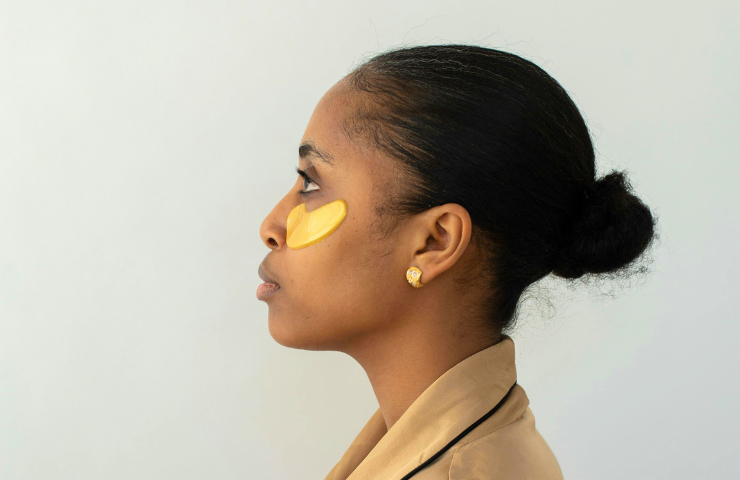How To: Brand Allyship And Advocacy For Lasting Impact

The effects of pandering and performative marketing
Companies have a bad reputation when it comes to allyship - and for good reason. Every June there is a flood of rainbow-branded products or new LGBTQIA+ spokespeople, followed by a lack of follow-through or advocacy for the other 11 months of the year.
Unfortunately, these practices are not limited to LGTBQIA+ issues as advertising tactics like femvertising and pinkwashing still exist.
Advocacy and allyship for the LGBTQIA+ and other underrepresented communities cannot be one-month sprints, they must be marathons. If brands are seeking to engage with these communities, they need to be committed to intentional and long-term advocacy work.
4 questions to help you get started
According to Charlie Amáyá Scott, an Indigenous, queer, trans-femme scholar and advocate, “as much as I would love to give a checklist of activities, like a progress report, and BOOM, cultural and social change is accomplished, that is not how life works, currently.”
When Charlie is asked the frequent “what can I do to be a better ally or advocate for [insert marginalized community]” question, they start by sharing the 4R’s – respect, relevancy, responsibility, and reciprocity, which were outlined by Kirkness and Barnhardt in their 1991 article on the relationship between Indigenous students and higher education.
These self-reflective questions are critical to ask before engaging in any advocacy and allyship work.
How are you respecting the marginalized community you intend to collaborate or advocate with?
- Evaluate your intentions. Think about the impact of your actions and how it will empower your community partners and your brand.
How relevant is your advocacy or allyship to the marginalized community?
- Continue your research. Understand the history, values, and traditions of the community you intend to collaborate with and consistently listen to established leaders.
How is reciprocity being developed between you and the marginalized community you intend to collaborate or advocate with?
- Make sure there is an even give and take with your relationships. Create a space for open dialogue where you can get honest feedback from the community you are working with.
How do you support the responsibilities of individuals within the marginalized community you intend to collaborate or advocate with?
- Don’t assume you know where your investments should go. Ask your community partners what their priorities are and focus on supporting the work they have already begun.
“Once you decenter yourself and center the experiences and issues of a marginalized community, then you are already a better ally and advocate. Continue to change the world for the better.” - @dineaesthetics
How to build sustainable allyship plans
Meg Ten Eyck, CEO of EveryQueer and a Diversity and Inclusion Consultant, says that brands can create positive and lasting change through internal workforce efforts, partnering with influencers, and broader marketing initiatives.
Start with internal change
A company’s values start from within the organization and emanate out to its larger audience, so it’s important to start with your closest community first - your employees.
- Provide LGBTQIA+ specific diversity and inclusion training to your staff.
- Hire LGBTQIA+ people at all levels of your business.
- Create an anti-discrimination policy that is inclusive of sexual orientation, gender identity, and expression.
- Create an Employee Resource Group for LGBTQIA+ people.
- Ensure that your employee benefits packages include the needs of LGBTQIA+ families.
- Ensure your health insurance benefits cover transgender medical expenses.
Partner with LGBTQIA+ identifying influencers
Influencers play an important role in the LGBTQIA+ community because they are “creating, curating, and distributing information” that builds and upholds the community, according to EveryQueer. As influencers are an essential part of a brand’s community, it’s important to ensure you are intentionally partnering with them.
- Ask for honest feedback on how your company can do better - and pay them equitably!
- Develop deep relationships for true representation
- Check in your influencers on what their local communities care about
- Don’t just partner with them for LGBTQIA+ issues. Ask for their input and participation for all types of influencer marketing conversations.
“Influencers fill a hole in the market caused by a lack of diverse representation. Queer influencers aren’t just changing the game for the internet – they’re changing our community.“ - @everyqueer
Improve inclusive marketing efforts
Partnering with influencers is just the first step when it comes to supporting marginalized communities. Brands need to look at their marketing initiative holistically to ensure they are being inclusive - not pandering.
- Hire LGBTQIA+ people when working on marketing creative to ensure their voices are heard.
- Include LGBTQIA+ inclusive messaging in campaigns year-round.
- Use gender-neutral language (IE: wedding party rather than bride & groom or parent rather than mother & father)
- Use BIPOC and LGBTQIA+ people in marketing and product imagery to ensure diverse representation.
- Sponsor events within the community to provide more access to LGBTQIA+ inclusive spaces.
What’s important to remember is it comes down to “what is it that [these communities] want and need, rather than what a brand desires. Advocacy and allyship is not about us, but about the community” says Charlie, @dineaesthetics.
For us at Traackr, we feel a duty to not only do our best to live our values but also reflect on how we can effectively and sustainably incorporate social activism into everything we do. You can find our sustainable action plan here which details our short term and long term initiatives.

Listen to Bella Clark, Head of Influencer and Partnerships at Lipton, and content creator, Thuy Le, share why authenticity outshines extravagance when it comes to creator partnerships.
Listen nowSee which brands are leading the way in influencer marketing with our real-time performance leaderboard.
View brand leaderboard_Nick_Fancher_Photos_ID6169.jpg)
Unlocking Creator Value for Global Brands in the Age of AI

The UK’s New “Less Healthy” Food & Drink Ad Rules Just Changed Influencer Marketing

Rising and Top Influencers #Over40 in the Beauty Industry
Level up your creator marketing expertise
Get industry insights and updates straight to your inbox.
